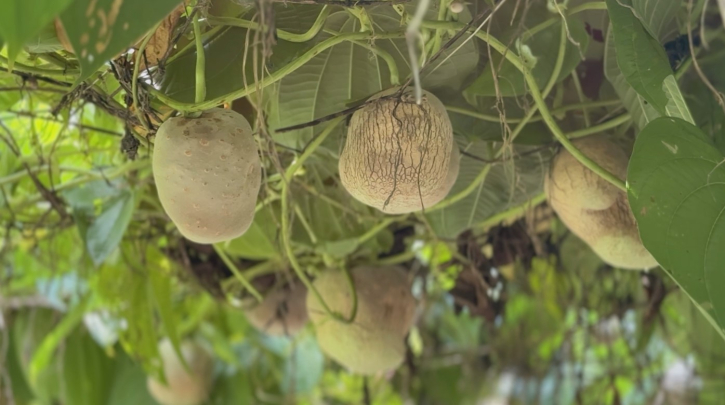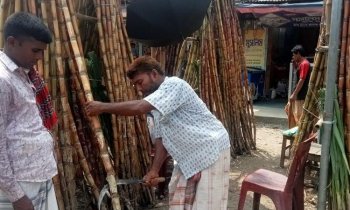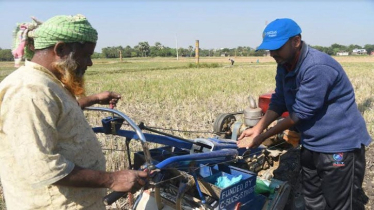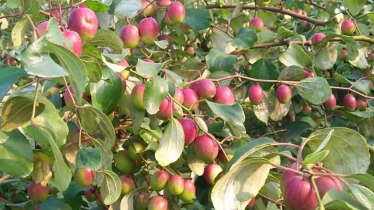
Tree potato cultivation, locally known as “paan alu” or “gaach alu,” is rapidly expanding on a commercial scale in Pakundia upazila of Kishoreganj district. Once grown casually in home gardens and abandoned lands, the crop is now becoming a profitable agricultural venture across various unions of the upazila.
The vine-like plant grows by climbing over trellises, bushes, or trees, and unlike traditional potatoes, the tubers hang from the vines instead of developing underground. During a recent visit to Pakundia, vast green fields covered with tree potato vines could be seen stretching across the landscape, creating the appearance of a lush green forest.
Farmers report that the cultivation cost of tree potato is relatively low, as it requires minimal fertilizers or pesticides. After harvesting crops such as sponge gourd or ridge gourd, farmers plant tree potato saplings on the same trellises, achieving yield within just three to four months.
Farmer Abdul Kader shared his experience, saying, “I spent around Tk 35,000 per bigha and earned nearly Tk 100,000 from sales. After expenses, I made a good profit.” Local farmer Rahim Mia added that the vegetable’s market demand peaks after the monsoon season when supply is limited. “Currently, we are selling at Tk 35–40 per kg, while regular potatoes sell for only Tk 25. The higher price and low investment make it a very profitable crop,” he said.
Farmers estimate that with an investment of Tk 30,000 to 40,000 per bigha, they can earn up to Tk 100,000 in a single season. The substantial profit margin has encouraged many new farmers to adopt tree potato cultivation.
Officials from the Department of Agricultural Extension view tree potato as a promising addition to Bangladesh’s vegetable sector. They note that it grows well in the post-monsoon period when few other crops thrive, making it a valuable alternative for farmers.
Emdadul Haque, Sub-Assistant Agriculture Officer of Charfaradi Block, said, “Tree potato has emerged as a new opportunity for our farmers. It requires minimal investment, gives high yields, and its market demand is rising. We regularly guide farmers on proper planting and trellis maintenance. This crop can not only increase farmers’ income but also make Pakundia a model for other regions. If export opportunities develop, it could significantly improve rural livelihoods.”
Pakundia Upazila Agriculture Officer Nur-e-Alam described tree potato as a nutritious and delicious vegetable with great potential. “Even when other crops fail after the monsoon, this one performs well. We are already promoting its cultivation in different districts. As it can be stored for a long time, it also holds export potential,” he said.
This season, tree potato has been cultivated on about 3,000 bighas of land in Pakundia, with a production target of 500 metric tons. According to agricultural officials, the crop is expected to enhance farmers’ living standards and could eventually become a source of foreign exchange earnings.
Farmers in Pakundia now see tree potato as a symbol of new hope. With lower costs and higher returns, the crop is bringing smiles to their faces and driving growth in the local rural economy.





